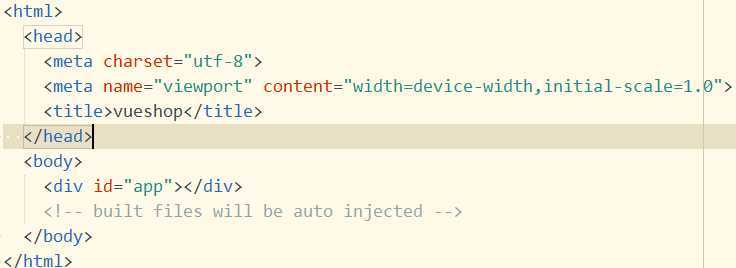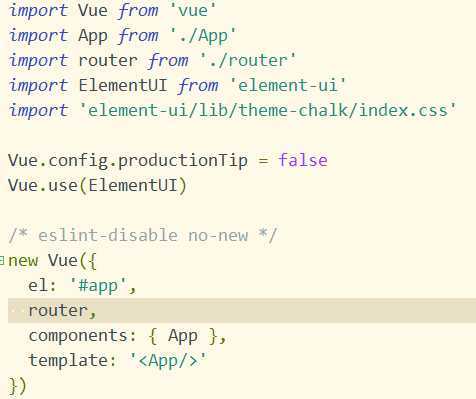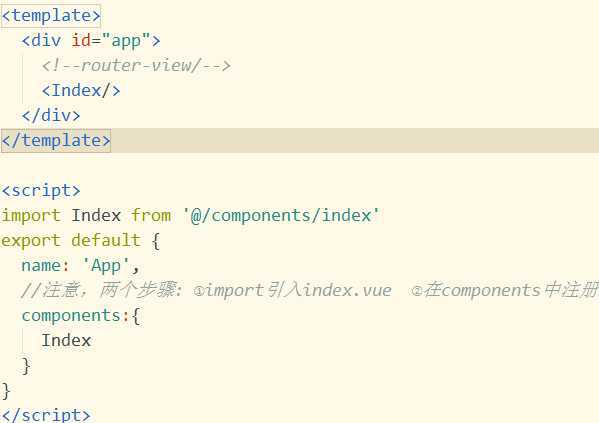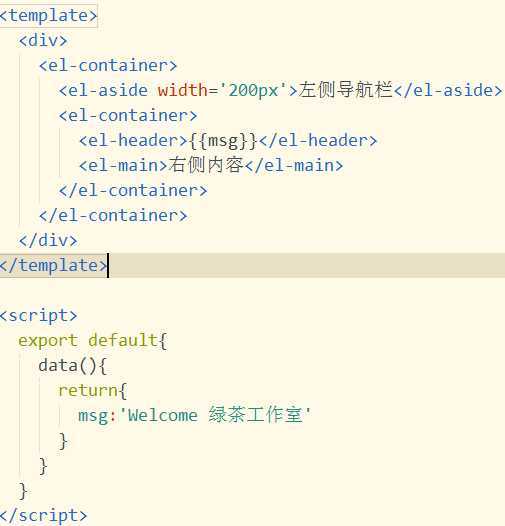引入
index.html :定义一个挂载点id=‘app‘ main.js:通过注册组件app,用app的内容替换id=‘app‘挂载点的内容。


app.vue:app内,注册组件index,并显示在div中。<index/> index.vue:组件index中,左侧为导航栏。右侧为主区域,显示主题内容。

 此时的路由根本没有启用,所以上面main.js中,完全可以注释掉router语句。运行后,如下图 。
此时的路由根本没有启用,所以上面main.js中,完全可以注释掉router语句。运行后,如下图 。
在index.vue中,如果希望点击展示相应的内容,代码的el-main中添加以下部分:
<el-main> <router-view></router-view> </el-main>
再配合el-menu router,即el-menu中添加router属性,即可实现点击应用application时,出现应用管理。当然,此时路由已配置好才行。此时的index.js
import Vue from ‘vue‘ import Router from ‘vue-router‘ import Index from ‘@/components/index‘ import Application from ‘@/components/Application‘ Vue.use(Router) export default new Router({ routes: [ { path: ‘/‘, //name: ‘HelloWorld‘, component: Index }, { path:‘/application‘, component:Application } ] })
此时的页面如下: http://localhost:8080/#/application。可以看到,地址栏的参数为application。

再比如,要在首页中显示表格:先在el-menu-item-group中添加index=‘Home‘。 然后,配置routes数组(同时import Home from ‘@/components/Home‘)。


最后,在Home.vue中,将el-table的代码复制到template中,将数据复制到return中,即可在首页中显示表格。
总结:在el-menu中添加router,可以响应路由,即在地址栏中实现以el-menu-item中的index为path进行地址跳转。
而此时的index,比如Home,在router下的index.js中,已经通过routes数组,配置为‘/home’,即当前目录下的home,组件对应为Home.vue。
所以,点击菜单Home,即可跳转到Home.vue组件,此时在Home.vue组件中,将想要展示的内容写好,即可展示,比如展示table,到element中复制table的代码即可。
=================================
cnpm i echars -s
安装Echarts。
引入,两种方式,一是哪个文件需要,就在哪里通过import引入,另一种方式,通过原型。
//通过原型,添加到原型对象中的属性
Vue.prototype.$echarts = echarts;
比如Home.vue中引入时:
var myChart = this.$echarts.init(document.getElementById(‘echart1‘));
原文:https://www.cnblogs.com/lhj1168/p/12745190.html